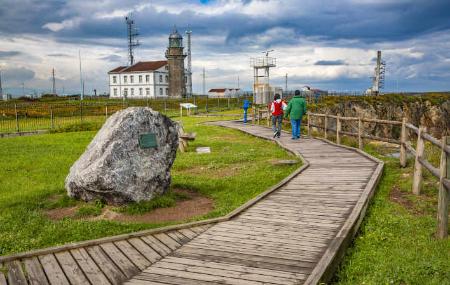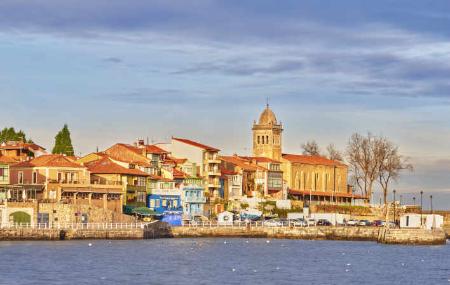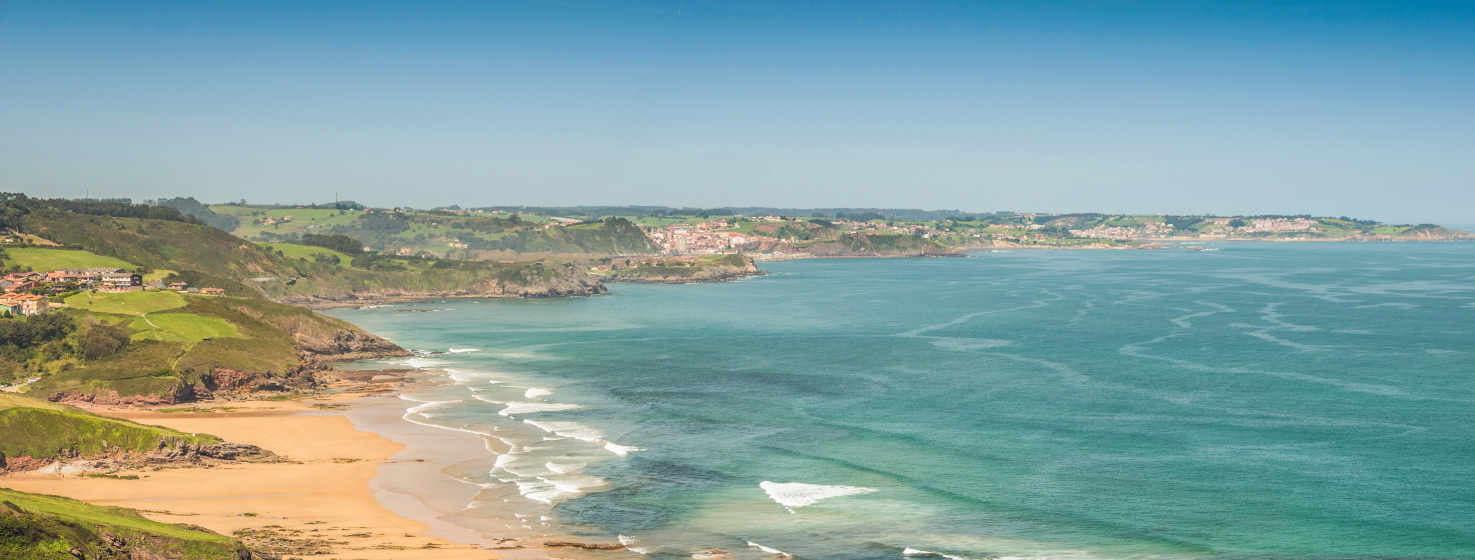
The region of Cabo Peñas is the spearhead of the map of Asturias in the Cantabrian Sea. The cape itself, as the prow and northernmost point of the Principality, is a great space where landscape and geology are exceptional. Its coastline, wild and fascinating, reveals millenary marine strata, and hides coves and hidden coves ideal for bathing and fishing. The fishing villages of Candás and Lluanco/Luanco are the heart of a territory where the sea is contagious in everything: economy, festivals, gastronomy and way of life. The tuna and the sardine have their well-deserved altar here.
Cape Peñas Protected Landscape
We look out over the last metres of Cape Peñas (Peñes), in the council of Gozón, as if we were looking out over the end of the Earth. This Asturian "Finisterre" is one of the most impressive places in the Cantabrian Sea. There is no more northerly corner in the whole region, nor more radical in its verticality, with almost a hundred metres of free fall from the tip of the rock called Gaviera, to the sea foam - that is why it is advisable not to be reckless when taking photos -. Resistant to millennia of erosion and folding, this heroic bastion contains rocks from the Palaeozoic, Mesozoic and even fossil traces from different geological periods. A spur that breaks the logic of the map and that on clear days allows us to make out half of the Asturian coastline: to the west, Cape Vidio and -if the day is good- even Cape Busto, there in Luarca/Ḷḷuarca. The same to the east, in addition to Punta del Castro, Narvata, Paguión, or Punta la Vaca, we can also see Punta Tazones, in distant Villaviciosa.
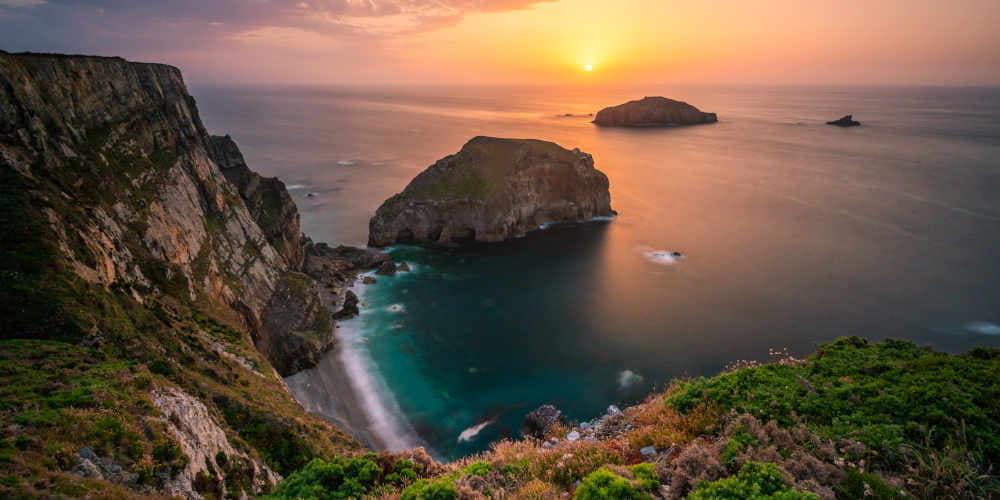
But not everything is peaceful contemplation, the Atlantic storms often unleash their fury here, the seagulls fight against the wind and we people become miniscule. A telluric spectacle that the Peñas Lighthouse has been facing since 1852. Just 60 metres from the cliff, its light pierces 41 miles of darkness or 18 miles of fog, trying to warn sailors of the sometimes invisible presence of this out-of-place mass. On the ground floor of the lighthouse is the Peñas Visitor Reception and Marine Environment Interpretation Centre, a museum with five rooms that immerse us in the epic of the sea. Shipwrecks, cetaceans and storms coexist with the scientific dissemination of the Protected Landscape of Cabo de Peñas: a coastal strip that is a living lesson in geology and nature, with cliffs, inlets and rocky outcrops that show layer by layer, fossil by fossil, millions of years of history.
This area, some 19 km² between Xagó beach and the Candás inlet, was declared a Protected Landscape in 1995. It is also a Site of Community Importance (SCI) and a Special Protection Area for Birds (SPA). Up to 26 marine species use it as a migratory highway, among them the tiny European storm petrel or the elusive shag, which find refuge in its habitat dotted with islets, such as the well-known Herbosa Island.
In addition to its rugged beaches and cliffs, its birds and marine fauna, the landscape of Cabo Peñas is a privileged peninsula that includes heather, wild olive trees and unique lichens that conquer the rocks, without forgetting its outstanding archaeological sites, such as those of Bañugues and its Lower Palaeolithic stone industry, or the Castiellu de Podes, a pre-Roman fort built in a strategic location and perfectly adapted to the terrain.
Trails and beaches
The Northern Path is a coastal route that crosses the central coast of Asturias and therefore this Protected Landscape, between the municipalities of Gozón and Carreño. It links natural viewpoints and countless marine spots, with stretches such as Verdicio-Cabo Peñas, Bañugues-Luanco or Perlora-Xivares, totalling more than 13 kilometres. The path is flat and easy to follow.
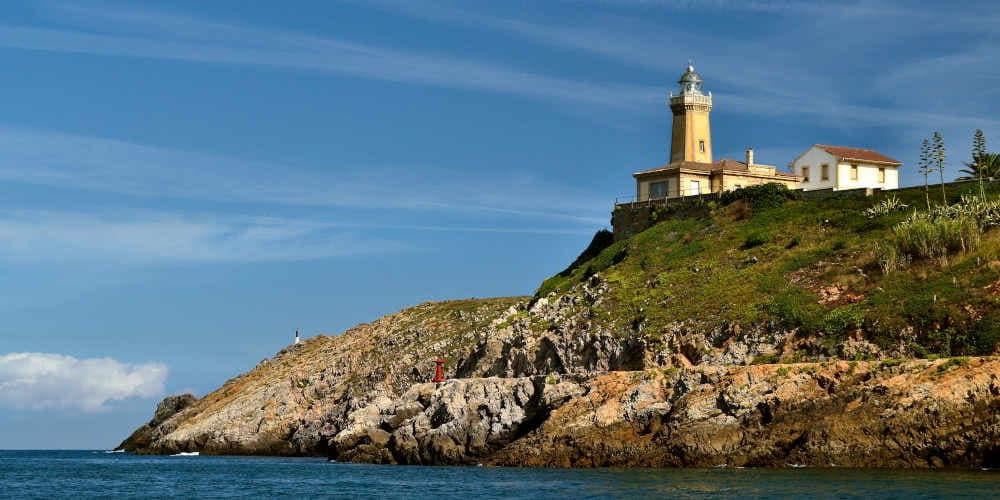
Routes around Cabo Peñas
We can visit surprising places such as the Llumeres anticline and its mining remains (the largest iron mine in Asturias was located here for several decades), or the beach of San Pedro de Antromero, where one of the most spectacular flysch (rock facies) from the Carboniferous period is found: vertical, thin and repeated layers, like pages of an open book that tells the story of an ancient sea. On this untamed coast it is a luxury to get close to "beach parks" such as Moniello, with a recreational area, children's playground, bar-restaurant and "ancestral" views.
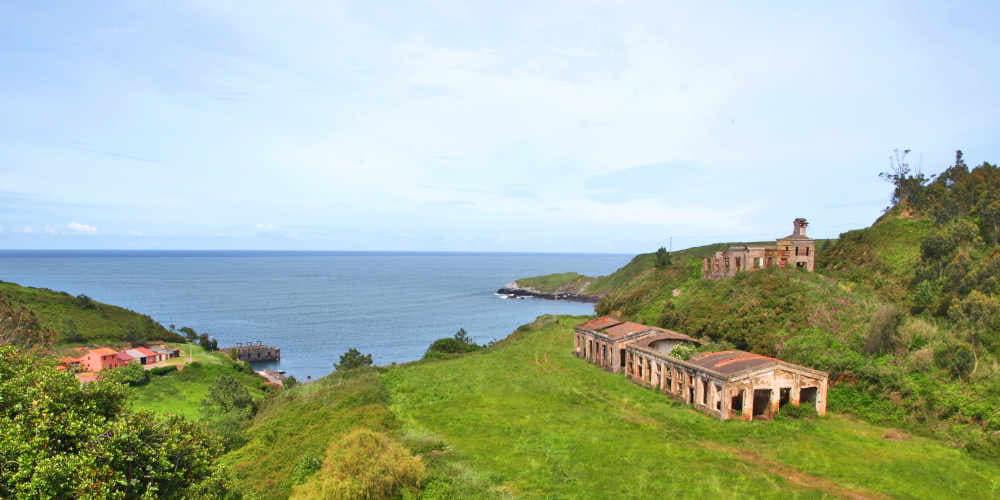
For birdwatchers, a trip to the Zeluán Pond and Llodero Cove is a must, as well as to the La Granda Reservoir, one of the most valuable wetlands in Asturias, with over 200 recorded bird species.
The Coastal Way of St. James also passes through these parts and joins old Roman roads, such as the one that crosses the slopes of Monte Areo. This mountain, the highest in the council with only 265 metres, contemplates a circular route that takes us to the dolmens of its Megalithic-Tumulitic Necropolis.
In the case of the so-called "Clarinian routes", you can walk through landscapes and villages that inspired Leopoldo Alas "Clarín", one of the great novelists of the 19th century. These routes are ideal for walking or cycling, and connect places that appear in works such as Doña Berta or Viaje Redondo, with medieval towers such as Prendes, Indian mansions, churches with a Romanesque past, colourful bread baskets or the Quinta Clarín, where the writer used to spend the summer.
Beaches of Carreño and Gozón
There are more than thirty beaches in this region, hidden among the cliffs, like well-kept secrets. There are beaches of golden sand, but also of pebbles or boulders, of pure rock. In the council of Gozón they form a varied and surprising mosaic: from the secluded and urban beach of Luanco, embraced by the port and the church, to the monumental Xagó, one of the natural jewels of Asturias, which in its more than 600,000 square metres is home to one of the largest and best preserved dune systems in the north. It is a very popular beach and good for surfing, as is Verdicio or Tenrero, also with wide dunes, meadows and beach bars with music at sunset. The Carniciega beach is joined to the previous one at low tide, and this in turn is joined by the Aguilera beach, which between them is over 1,000 metres long. Just two kilometres from Lluanco/Luanco is the beach of Bañugues, with calm waters and great width at low tide, making it perfect for the whole family to enjoy.
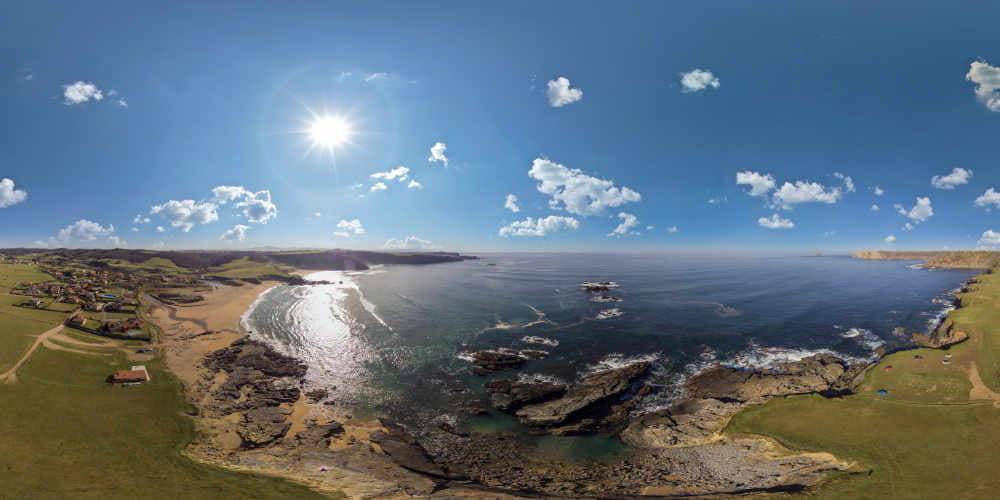
In the neighbouring council of Carreño, the urban beach of La Palmera ("the beach of Candás") is sandy and wide at low tide. Les Huelgues, Carranques, El Tranqueru and Xivares, meanwhile, are coves with adjoining rocky outcrops and ecosystems of great marine biodiversity. They are in a very natural environment, although they also have recreational areas, beach services and beach bars, as they are located next to the promenade of Perlora, an old holiday town that was a summer refuge for many Asturian working-class families.
Tourism in Cape Peñas
This region, well communicated and very close to Gijón/Xixón, Avilés and Asturias airport, is a perfect refuge for the traveller in search of a good rest. In the rural surroundings there is an abundance of accommodation, cider houses and restaurants, services that are multiplied in its coastal villages, where, in addition to its seafaring memory, the spirit of the old family summer holiday is still alive.
Luanco and Candás: seaside towns
Lluanco/Luanco and Candás are the two coastal capitals of the Cabo Peñas region and, like two sides of the same coin, they offer the traveller hospitality and anti-stress summer leisure. Both towns - the first capital of Gozón, the second of Carreño - have the rare gift of welcoming the visitor with a very natural cordiality: "Come in, sit down, try this". Its people make you feel at home, perhaps because the summer is already well established. In Candás, since the times of Clarín and Palacio Valdés (its two most famous tourists), entire families from Oviedo/Uviéu or Madrid have enjoyed its beach, its historic port and the pleasant promenade. It also has outstanding cultural spaces such as the Prendes Theatre or the "Museo Antón" Sculpture Centre. All of this under the watchful eye of its emblematic lighthouse of San Antonio, which, on the edge of the cliff, continues to enchant locals and visitors alike.
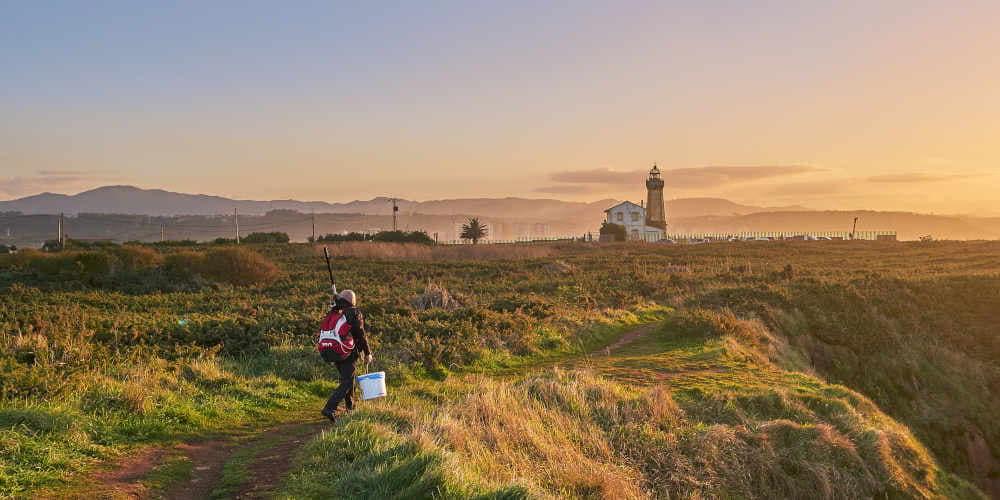
Lluanco/Luanco was already, from the middle of the 19th century, one of the first summer resorts in the Cantabrian Sea. Its beaches were praised for their beauty and therapeutic value. Today, the town still offers a well-kept historic quarter: the 18th century Clock Tower, the church of Santa María (18th century) or the Casa Mori (a modernist jewel). Its streets and houses are surprising for their seafaring authenticity, especially in the area around the "Muelle Viejo" (Old Quay) and the old quarter.
In Candás, the great growth of the canning industry since the end of the 19th century (there were up to 24 factories, with well-known brands such as Albo and Ortiz), meant that for years the price of fish for the whole of Asturias was fixed here. Today, the Permanent Exhibition of the Candás Canning Industry, located in the former factory of Bernardo Alfageme, bears witness to this era with original pieces. It shows from the traditional preservation techniques to the most modern canning, the evolution of the factories or the working conditions.
In Lluanco/Luanco, whale fishing reached its zenith between the 16th and 17th centuries. Up to 600 cetaceans were hunted by the boats that left the port, after the watchman in La Mofosa had been warned. From that period, there are still humeri, scapulae and vertebrae of leviathans in the Asturias Maritime Museum(opens in a new tab), as well as real ships, maps, cabins and nautical charts that narrate the daily epic of those men of the sea.
Cider houses and restaurants also pay daily homage to the sea: tuna, monkfish, clams, hake casserole, sea bass, conger eel or fish stew. For dessert, casadielles, rice pudding and the inimitable marañuela. A typical sweet of both towns, the marañuelas, reminiscent of a sailor's knot, were given to those leaving for the coast. It contained affection, hope and the energy needed to fish on the high seas.

Both towns not only preserve their roots, but also celebrate them in a big way. The seafaring Christ of Candás is responsible for a major festival in mid-September. According to legend, the statue was found in the Irish Sea by local fishermen in the 16th century. Over the centuries miracles have been attributed to him; today his image (in the church of San Félix) is a source of continuous pilgrimage. The town of Candas also celebrates at the end of July its Pipe Band Festival ( declared of Tourist Interest in the Principality), and on 1 August its popular Sardine Festival (also of Regional Tourist Interest), which fills the town with the unmistakable aroma of this grilled fish and well-poured cider.
Lluanco/Luanco also has a Christ, the Cristo del Socorro, whose festivity takes place on 5 February, when the "miracle" that saved sailors from a storm in 1776 is commemorated. In July, the Beach Tennis Tournament takes place, the only one in the world that is played on the sand of a beach during low tide. La Ribera beach becomes an improvised stadium with more than 2,000 spectators, and important figures in this sport compete in the event. And if in Candás the sardine is the absolute queen, in Lluanco/Luanco it is the tuna, the bonito, whose festival is held at the end of June. And every 14th August, the town also celebrates its summer Carnival, a spontaneous and contagious festival that began as a celebration between neighbours, and which has become one of the most eagerly awaited events of the Asturian summer.
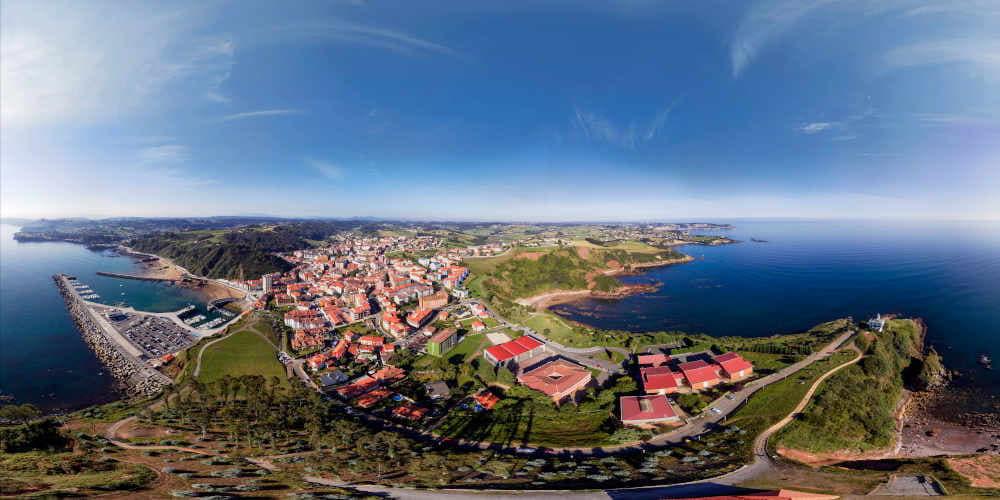
From Candás to Lluanco/Luanco (or the other way round), you can walk in little more than half an hour, along a coastal route that crosses places of great natural beauty. A walk that invites you to discover the charms of a region that should not be walked in a hurry, but attentively.
Images
Map
What to see
- The town of Candás and its Museum of Canned Food.
- Town of Lluanco/Luanco and its Maritime Museum.
- Sardine Festival.
- Cabo Peñas Protected Landscape.



